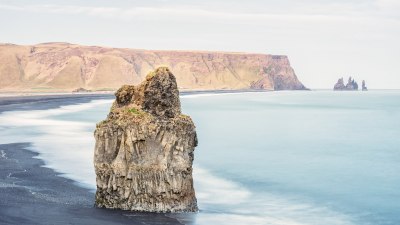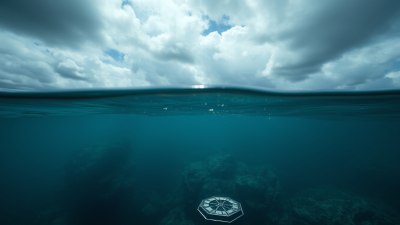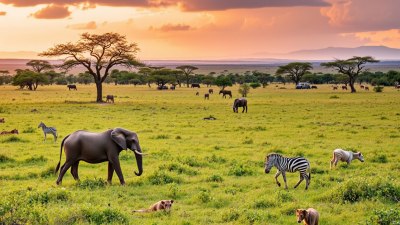Traveling to the Edge of the World - What It’s Really Like
Discover what it's truly like to travel to the edge of the world, exploring breathtaking landscapes and unique cultures.

Traveling to the edge of the world is a phrase that evokes images of untouched landscapes, rugged terrains, and profound isolation. Many dream of venturing to places that feel like the last remaining frontiers on Earth. From the vast expanses of Antarctica to the remote islands of the Arctic, traveling to such destinations often offers a unique blend of adventure, beauty, and introspection. This article delves deep into the realities of traveling to these extreme locations, shedding light on what travelers can expect, the challenges they may face, and the extraordinary experiences that await them.
There is an undeniable allure to locations that are referred to as the "edge of the world." These destinations often represent the unknown, the uncharted territories where few have ventured. For many, the journey itself is as intriguing as the destination. The excitement builds as you prepare for a trek into the wilderness, knowing that you are heading to a place where nature reigns supreme and the hand of humanity has had little impact. The raw beauty of such places can be awe-inspiring, making the physical challenges of travel seem insignificant in comparison to the magnificent sights awaiting you.
Choosing Your Destination
The first step in your journey to the edge of the world is choosing where to go. Options abound, but a few standout locations offer the quintessential experience of traveling to remote areas. One of the most remarkable places is Antarctica. This continent is home to immense icebergs, charming penguins, and stunning landscapes that can only be described as otherworldly. Another impressive location is the Arctic, with its glaciers, polar bears, and the northern lights illuminating the night sky. Other destinations include the windswept cliffs of Patagonia in South America, the remote fjords of Norway, or the isolated islands of the South Pacific. Each location presents its own unique challenges and rewards.
Preparing for the Journey
Traveling to the edge of the world requires thorough preparation. Unlike conventional travel, these journeys often involve unpredictable weather, challenging terrain, and lack of modern amenities. It's essential to pack wisely, prioritizing the essentials that will keep you safe and comfortable. A high-quality thermal jacket, insulating layers, durable hiking boots, and other weather-appropriate gear are critical. Additionally, consider including portable water filters, survival kits, and travel insurance that caters to extreme environments. Being mentally prepared is just as important as physical readiness; understanding the risks involved in such travel is crucial in ensuring a successful adventure.
The Travel Experience
The actual experience of traveling to remote locations varies significantly depending on the destination. In Antarctica, for instance, you might board an icebreaker and spend days navigating through frozen waters, witnessing the majestic glaciers and ice formations up-close. The sound of ice cracking under pressure is a reminder of nature's power. In contrast, a trip to the Arctic might involve dog sledding across the tundra or experiencing the thrill of snowmobiling through pristine landscapes. No matter where you go, expect to encounter not only breathtaking sights but also the opportunity to witness wildlife in their natural habitats, from seals and whales in Antarctica to polar bears and arctic foxes in the north.
Encounters with Nature
Perhaps one of the most profound aspects of traveling to the edge of the world is the intimate connection with nature. In these remote spots, you are continually reminded of your humanity and the fragility of our existence within the vastness of the planet. You may find yourself gazing at a colony of penguins, feeling a sense of responsibility for preserving their habitat, or standing at the edge of a glacier and pondering the impact of climate change. Such encounters offer opportunities for reflection and inspire travelers to become ambassadors for environmental conservation.
The Challenges of Remote Travel
With the extraordinary beauty of these destinations comes significant challenges. Harsh weather conditions can impact travel plans significantly. Storms in the Antarctic can delay journeys, while extreme cold can affect health and overall enjoyment of the trip. Accessibility is another major concern; many remote areas lack road networks and reliable transport options. In some cases, travelers may have to adhere to a strict schedule dictated by weather and local conditions, making flexibility essential. Additionally, the lack of amenities can be jarring for those accustomed to modern comforts; travelers often have to acclimate to rustic living conditions and limited access to resources.
Meeting Unique Cultures
Traveling to the edge of the world also provides a rare chance to interact with indigenous communities and learn from their unique perspectives. Many remote locations are home to cultures that have thrived in harsh conditions for centuries. In the Arctic, for instance, you might meet the Inuit people, who have adapted to their environment in remarkable ways. Such interactions can foster understanding and appreciation for diverse ways of life, reinforcing the interconnectedness of all people. As you listen to stories passed down through generations, you gain insights into broader issues, such as climate change and the preservation of traditional knowledge.
Photography and Documentation
For many travelers, capturing the essence of their journey is a priority. Remote locations often provide incredible opportunities for photography, with stunning landscapes, wildlife, and the dramatic interplay of light found in the polar regions. Whether it’s the golden glow of the midnight sun in summer or the ghostly hues of twilight in winter, the natural light creates magical conditions for photography. Moreover, documenting your experiences through journaling or blogging can enhance personal reflection and offer valuable resources for future travelers.
Connecting with Fellow Adventurers
Traveling to remote areas often means encountering like-minded adventurers. From seasoned explorers to first-time travelers, there is a camaraderie that develops when facing the challenges of extreme environments. Shared experiences of awe-inspiring landscapes or challenging hikes can create bonds that last a lifetime. Networking with others can also provide new insights, tips, and inspiration for future journeys. Not only does it enhance the travel experience, but it often results in lifelong friendships formed in the wild.
Returning Home
Returning home after traveling to the edge of the world can bring a mix of emotions. There is often a sense of accomplishment, having ventured beyond the comfortable margins of everyday life. However, many travelers also feel a lingering sense of longing for the peace and beauty of the remote landscapes left behind. The experience can be transformative, leading to powerful reflections about one’s place in the world and the importance of preserving natural wonders. It’s common for travelers to find themselves changing their lifestyles and becoming involved in environmental advocacy as a result of their journeys.
Traveling to the edge of the world is not merely about reaching a destination; it is a profound journey of discovery that challenges your perceptions and strengthens your bond with nature. While these adventures may come with their share of hardships, the rewards often far outweigh the challenges. For those who seek extraordinary experiences, the edge of the world awaits with open arms, offering lessons, beauty, and unforgettable memories that last a lifetime.











